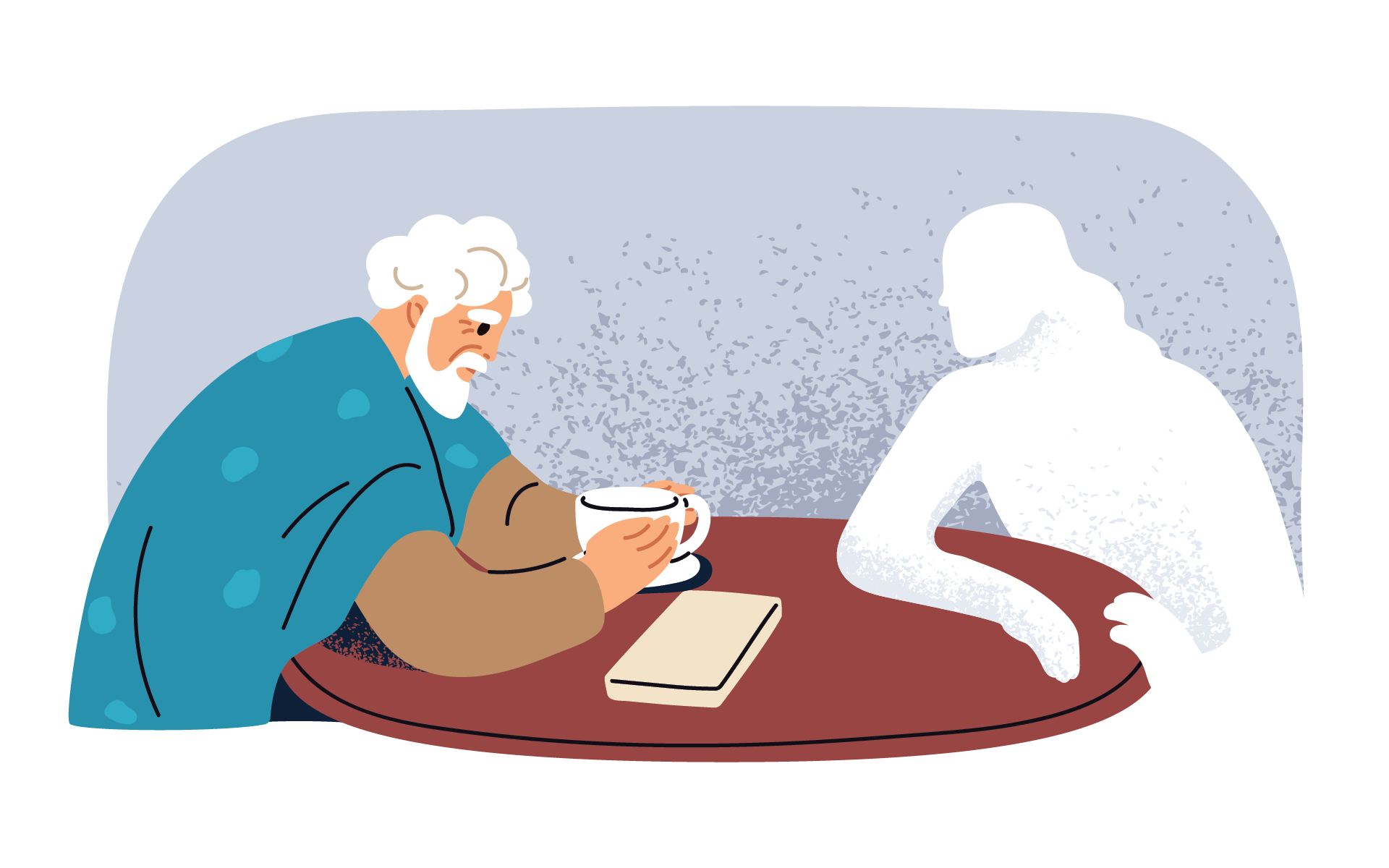Every Saturday night, Bill and Sarah leave their son with a babysitter and go out to dinner. Sarah hopes that by dressing up for date night, it’ll keep a spark in their marriage. One night, Sarah puts on a new, little red dress. It’s more daring than what she usually wears, so she’s nervous to show him.
When he sees it on her, he smiles and gives a little, surprised shake of his head. “You look…different,” he says. Sarah feels crushed, but she doesn’t say anything. Instead, she feels self-conscious all night and swears to herself that she’ll never wear it again.
That night, when they’re in bed together, and Bill leans in to kiss her, she gives him a quick peck on the cheek, rolls over, and pretends to fall asleep. For the rest of the week, Sarah thinks about the red dress and Bill’s comment. She pretends her stomach hurts when Bill wants to make love.
By Saturday, Sarah is fuming mad but holds her feelings in, just so she doesn’t have to ask, “What did you mean by ‘You look different’?” and say, “That hurt my feelings.” What she doesn’t know is that if she did so, it would make her feel better. Bill would tell her the truth: He’d never seen her in something like that before, so she caught him off guard. But he liked the way she looked in it.
Sarah’s behavior toward Bill is a classic example of passive-aggressive behavior. Passive aggression is the indirect expression of anger by someone who is uncomfortable or unable to express his or her anger or hurt feelings honestly and openly.
Passive aggression is a symptom of the fear of conflict. While someone’s passive aggressive behavior may make you instantly feel like you’re in the middle of a fight, that’s what he or she is trying to avoid.
When both members of a couple have a healthy relationship with anger, they can feel it, say they’re upset, discuss what triggered them, and find a resolution and closure. Passive aggression is a symptom of the fear of conflict. While someone’s passive aggressive behavior may make you instantly feel like you’re in the middle of a fight, that’s what he or she is trying to avoid. Unfortunately, it makes it much harder to reach resolution and closure, because the anger is always simmering, never rising to the surface to be confronted.
Passive aggressiveness often stems from one’s childhood experience with anger. If you witnessed explosive anger as a child, where a caregiver yelled or displayed physical aggression, you are likely to grow up terrified of the emotion—not just of seeing someone get angry, but of feeling anger, too. Passive aggression can also spring from caretakers who treated anger like it was always on the emotional “no” list. Happiness? Yes. Sadness? Sure, everyone feels sad sometimes. Anger? Nope. Not in this house.
When we grow up believing that anger is always scary or is never allowed, we don’t learn how to feel it and express it in a way that is healthy and even beneficial to a relationship.
Over the course of my 35 years working in Santa Monica as a marriage and family therapist, and teacher of anger-management classes, I developed some specific tips for coping with passive aggression. Passive aggression is a learned behavior that can be unlearned. To help your partner confront and deal with his or her passive aggressiveness, you need to be clear that it’s not who your partner is that bothers you, but how he or she behaves some of the time. When the passive-aggressive person is you, then you need to take the same steps and remind yourself that it is a behavior that you have the power to change.
What to do in the heat of the moment
When passive aggression emerges in the middle of a conflict, here are seven steps to take.
- Chill out. Attempting to begin a dialogue when one or both of you are in a very negative headspace will cause the person who behaves passive-aggressively to shut down or to escalate the situation. Take a minute to chill out and calm down before approaching each other and the issue.
- Talk it out. Don’t try to guess or assume you know what your partner is feeling or thinking. Instead, ask your partner how he or she feels.
- Brainstorm. The work of being in a successful relationship takes two people. As often as possible, come up with ideas for solutions to your issues together. Make your list of options as long and as wide-ranging as possible.
- List pros and cons. Once you’ve finished brainstorming a list of possible solutions, talk through the pros and cons of each idea on the list.
- Win-win. The best solution is the one where both of you win the most and lose the least.
- Execute the plan. Take your win-win solution and execute it. It may take some time to see if it works. Make a plan in advance for when you’ll come back to evaluate.
- Evaluate. Did your solution work? If not, try one of the other solutions on your list for another trial period.
Attempting to begin a dialogue when one or both of you are in a very negative headspace will cause the person who behaves passive-aggressively to shut down or to escalate the situation.
How to eliminate passive-aggressive behavior over the long run
Of course, addressing passive aggression in the heat of the moment is, at best, a thin bandage. For many couples, passive aggression is a long-term pattern—and the best way to change the pattern is to work on it together, over time.
Eliminating passive aggressiveness involves establishing clarity about the dividing lines between you and your partner—and respect for each other’s emotional and physical space. It also calls for flexibility. Ideally, you and your partner can get to a place where you feel secure enough in your relationship that you can change your boundaries without fear of losing yourself or the relationship. You will feel flexible in your boundaries because it’s your choice, not because your partner is pressuring you.
If your partner is the one who is passive aggressive, you need to make sure he or she knows what it is they do or say that upsets and angers you, but they also need to hear that you love them and that expressing anger will not automatically end your relationship. If you’re the passive aggressive one in the relationship, you should be open to hearing what your partner has to say about how you can meet his or her emotional needs.
Here are three steps you can take to understand each other’s boundaries and create a healthier relationship to anger:
- Make a list. Take some quiet time to yourselves to each make a list of some recent issues that have come up in your relationship. Write down the last time you felt angered by something your partner said or did and the last time you felt hurt by something your partner said or did. Write down one thing you wish you could change about your significant other’s behavior and one thing your partner could do to make you feel happier and more secure in your relationship.
- Draw the boundaries. Looking over your list, can you identify any specific boundaries that would help you in your relationship? The more precise and tailored your request, the better.
If your partner’s demand that dinner is on the table every night angers you, don’t say, “It upsets me you never cook dinner; I’d be happier if you cooked more.” Instead, say, “It would mean a lot to me if you would be in charge of dinner on Monday nights since that’s the day I always have the most stress at work.” You don’t even have to ask that he or she cook the meal if that’s not what’s most important. Explain that takeout or delivery is okay with you as long as you don’t have to think about it or plan it.
- Take one day at a time. To not make this about one partner needing to fix things and be better for the other, each of you should exchange one boundary or request. Do only one for now and see how it goes. But keep your lists and, in a few weeks, come back together for an update to see how this exercise went and to exchange one more request.
When in passive-aggressive conflict, remember to focus on the present or future rather than rehashing the past. While you may still be upset about the past, it’s not going to help you or your partner to keep bringing up old wounds when discussing current problems. Remember to respect your partner’s thoughts and feelings, and expect he or she to respect yours, too. Don’t forget to take responsibility for your behavior.
Finally, even if it’s your partner’s passive aggressiveness that has you reading articles online and doing seven-step exercises, remember you’re not perfect, either. Your focus should be on solving the problem at hand, not on being right, or better, or proving that you’re emotionally healthier. Everyone has room to improve and has a role in bettering a relationship.






